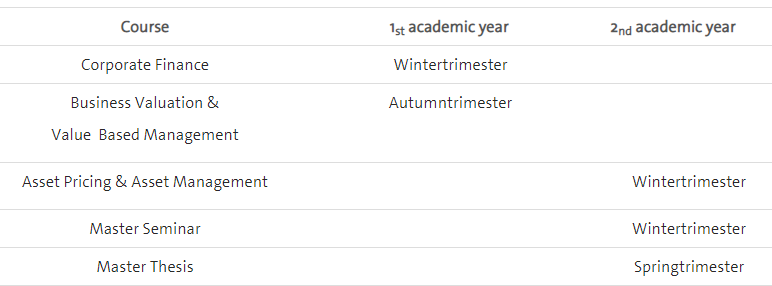Undergraduate Courses (Bachelor)
Study Project
In this project, indicators and characteristics of corporate crises are examined in order to develop suitable restructuring strategies. Practical examples will be used to illustrate the implementation. In addition to the business and financial aspects, selected legal framework conditions are also included.
Current information on the Study Project course can be found on the learning platform ILIAS.
Capital Budgeting & Introduction to Corporate Finance
Capital Budgeting
The course begins with a definition of the reference point for assessing the merits of investment projects and clarifying basic concepts. Building on this, approaches to capital budgeting such as the net present value method, the internal rate of return method, the annuity method and payback will be presented and analysed. Then, the net present value method is extended by the introduction of taxes and an analysis of risk. On the basis of a case study, the economic prerequisites for value-generating projects and strategies are worked out. Finally, concepts for ex-post analysis and control of investment decisions (performance measurement) are discussed.
Introduction to Corporate Finance
The course starts with a discussion and categorization of possible sources of financing. Then, concepts for liquidity measurement including cash flow definitions and financial planning, the influence of risk on credit agreements and the wealth of lenders and borrowers, the procurement of equity capital by companies with and without access to the stock exchange (venture capital, IPO or seasoned equity offering) as well as financing by debt will be discussed.
Latest information for the Capital Budgeting & Introduction to Corporate Finance course can be found on the learning platform ILIAS.
Undergraduate Curriculum

Graduate Courses (Master)
Corporate Finance
The course deals with capital budgeting, financing and payout decisions. Assuming efficient capital markets as well as managers acting in the owner's interest and ignoring insolvency risk, a robust reference framework can be developed for the selection and control of various investment and financing alternatives. The problems between owners (principals) and managers (agents) or investors resulting from asymmetrical information distribution and conflicts of interests result, inter alia, in a realistic capital structure and dividend policy. Among other things, the relationship between risk and return, the influence of the capital structure on company value and various sources of financing are discussed.
Latest information on the course Corporate Finance can be found on the learning platform ILIAS.
Asset Pricing & Asset Management
Asset Pricing
This section deals with the valuation of securities and derivatives, which has to deal with the timing, amount and risk of the corresponding cash flows. The pricing of bonds is discussed, taking into account, among other things, the yield curve as well as interest rate and default risk. Derivatives such as forwards, futures, options and swaps as well as hybrid instruments such as convertible bonds will be evaluated. Exemplary valuations of products will conclude the first section of the course.
Asset Management
This section builds upon the Asset Pricing section by examining the portfolios of securities on the basis of the resulting cash flows and risk/return profiles. In addition, derivative-based hedging strategies to manage market price risks, the measurement of portfolio performance and risk-oriented performance measures are discussed.
Latest information on the Asset Pricing & Asset Management course can be found on the learning platform ILIAS.
Company Valuation & Value Based Management
The course begins with a presentation of the situations in which a valuation is necessary, which highlight the relevance of the topic. The conceptual discussion concentrates on the discounted cash flow method (APV, WACC and FTE), while also introducing risk-neutral valuation procedures. Relevant surpluses and cost of capital are derived and the robustness of the methods is checked - depending on the assumed financing strategy and taking into account taxes. In addition, we consider the valuation with multipliers, which is quite popular in practice. Real-world transactions illustrate the application of the methods. Value based management is discussed as an application of continuous company valuation. The analysis of various consulting performance measures and value drivers concludes the course.
Latest information on the Company Valuation & Value Based Management course can be found on the learning platform ILIAS.
Graduate Curriculum
